 W
WProcopius Anthemius was western Roman emperor from 467 to 472.
 W
WAntigonus II Mattathias, also known as Antigonus the Hasmonean was the last Hasmonean king of Judea. A puppet king installed by the Parthians, he was the son of King Aristobulus II of Judea. In 37 BCE Herod handed him over to the Romans for execution, after Antigonus's three-year reign during which he led the Jews' fierce struggle for independence against the Romans.
 W
WSidonia von Borcke (1548–1620) was a Pomeranian noblewoman who was tried and executed for witchcraft in the city of Stettin. In posthumous legends, she is depicted as a femme fatale, and she has entered English literature as Sidonia the Sorceress. She had lived in various towns and villages throughout the country.
 W
WBlessed Lucien Botovasoa was a Madagascan Roman Catholic schoolteacher and a professed member from the Secular Franciscan Order. Botovasoa served as a teacher for his entire life and was dedicated to both the religious and secular education of children. His thirst for the religious life led him to discover the Secular Franciscan Order in 1940 and he became part of it; he rallied others to know Francis of Assisi and enter the order themselves. Botovasoa likewise adopted the Franciscan charism for himself through his fasting and clothing habits.
 W
WSaint Cecilia, also referred to as Saint Cecelia, is a Roman martyr venerated in Catholic, Orthodox and Anglican churches. She became the patron of music and musicians, it being written that, as the musicians played at her wedding, Cecilia "sang in her heart to the Lord". Musical compositions are dedicated to her, and her feast, on 22 November, is the occasion of concerts and musical festivals.
 W
WConstantina was the Empress consort of Maurice of the Byzantine Empire. She was a daughter of Tiberius II Constantine and Ino Anastasia. Her parentage was recorded in the chronicles of Theophylact Simocatta, Paul the Deacon and John of Biclaro.
 W
WFlavius Claudius Constantinus, known in English as Constantine III, was a Roman general who declared himself Western Roman Emperor in Britannia in 407 and established himself in Gaul. He was co-emperor from 409 until 411.
 W
WMadduma Bandara Ehelapola, mostly known as Madduma Bandara, was one of the national heroes of Sri Lanka. Bandara and his family were executed in 1814 by the King for treachery. His bravery at the time of his execution made him a legendary child hero in Sri Lanka.
 W
WJacques Gruet was a poet and libertine put to death in Geneva during John Calvin's lifetime in the 16th century.
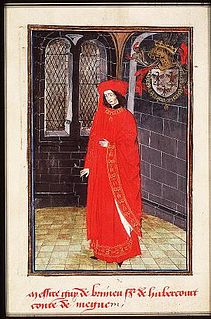 W
WGuy de Brimeu known as the great or Gwijde of Brimeu, was a knight of the Golden Fleece, he was beheaded in Ghent on 3 April 1477.
 W
WFlavius Illus was a Byzantine general, who played an important role in the reigns of the Byzantine Emperors Zeno and Basiliscus.
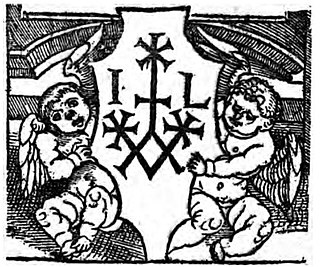 W
WJacob van Liesvelt or Jacob van Liesveldt, was a Flemish printer, publisher and bookseller. His printing press put out publications in a wide range of genres, including poetry by Anna Bijns, Roman Catholic literature, such as an anti-heresy decree, and publications that conflicted with Catholic teachings. He published the first complete Dutch translation of the Bible in 1526. It was largely based on Martin Luther's translation. He was eventually executed for publishing unauthorised versions of the Bible.
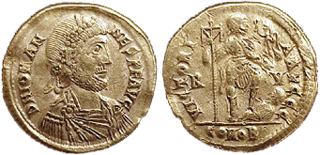 W
WJoannes or John was a Roman usurper (423–425) against Valentinian III.
 W
WJohn the Baptist was a Jewish itinerant preacher in the early 1st century AD. Other titles for John include John the Forerunner in Eastern Christianity, John the Immerser in some Baptist traditions, and the prophet John (Yaḥyā) in Islam. He is sometimes alternatively called John the Baptizer.
 W
WTiberius Junius Brutus was the younger son of Lucius Junius Brutus, who was one of Rome's first two consuls in 509 BCE. His mother was Vitellia.
 W
WTitus Junius Brutus was the elder son of Lucius Junius Brutus, who was one of Rome's first two consuls in 509 BC. His mother was Vitellia.
 W
WJustin Martyr, an early Christian apologist, is regarded as the foremost exponent of the Divine Word, the Logos, in the second century. He was martyred, alongside some of his students, and is venerated as a saint by the Catholic Church, the Anglican Church, the Eastern Orthodox Church, and the Oriental Orthodox Churches.
 W
WEdward Kaźmierski was Polish Roman Catholic anti-Nazi resistance fighter. He was born in Poznan. He was guillotined in a prison in Dresden. He is one of the 108 Martyrs of World War II who were beatified by Pope John Paul II in 1999.
 W
WLeontios or Leontius was Byzantine emperor from 695 to 698. Little is known of his early life, other than that he was born in Isauria in Asia Minor. He was given the title of patrikios, and made strategos of the Anatolic Theme under Emperor Constantine IV. He led forces against the Umayyads during the early years of Justinian II's reign, securing victory and forcing the Umayyad caliph, Abd al-Malik ibn Marwan, to sue for peace.
 W
WLeontius was a general of the Eastern Roman Empire and claimant to the throne who led a rebellion against emperor Zeno in 484–488.
 W
WMaurice was Byzantine emperor from 582 to 602. A prominent general, Maurice fought with success against the Sasanian Empire. After he became Emperor, he brought the war with Sasanian Persia to a victorious conclusion. Under him the Empire's eastern border in the South Caucasus was vastly expanded and, for the first time in nearly two centuries, the Romans were no longer obliged to pay the Persians thousands of pounds of gold annually for peace.
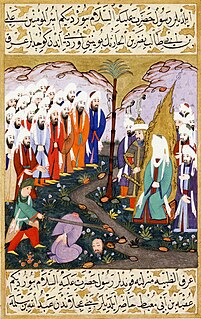 W
WAl- Naḍr ibn al-Ḥārith ibn ʿAlqamah ibn Kaladah ibn ʿAbd Manāf ibn Quṣayy was an Arab pagan physician who lived in the same time and region as the Islamic prophet Muhammad. He was captured after the Battle of Badr and then executed. After the battle, Muhammad decided to return to Medina. While Muhammad was returning to Medina, he reportedly received a revelation regarding the distribution of war booty. This per tafsir was the Quran verse Quran 8:41.
 W
WSaints Nazarius and Celsus were two martyrs of whom nothing is known except the discovery of their bodies by Saint Ambrose.
 W
WFlavius Phocas was Eastern Roman emperor from 602 to 610. The early life of Phocas is largely unknown, but he rose to prominence in 602, as a leader in the revolt against Emperor Maurice. Phocas captured Constantinople and overthrew Maurice on 23 November 602, and declared himself emperor on the same day. Phocas deeply mistrusted the elite of Constantinople, and therefore installed his relatives in high military positions, and brutally purged his opponents. Phocas was an incompetent leader, both of the administration and army, and under him the Byzantine Empire was threatened by multiple enemies, with frequent raids in the Balkans from the Avars and Slavs, and a Sassanid invasion of the eastern provinces. Because of Phocas' incompetence and brutality, the Exarch of Africa, Heraclius the Elder, rebelled against him. Heraclius the Elder's son, Heraclius, succeeded in taking Constantinople on 5 October 610, and executed Phocas on the same day, before declaring himself the emperor.
 W
WProcopius of Scythopolis is venerated as a martyr and saint. He was a famous ascetic and erudite theologian and philosopher. Eusebius of Caesarea wrote of his martyrdom, which occurred during the persecution of Roman Emperor Diocletian, and stated that "he was born at Jerusalem, but had gone to live in Scythopolis, where he held three ecclesiastical offices. He was reader and interpreter in the Syriac language, and cured those possessed of evil spirits." Eusebius wrote that Procopius was sent with his companions from Scythopolis to Caesarea Maritima, where he was decapitated.
 W
WRais, also known as Iraida, Irais, Herais or Rhais, is a martyr venerated by the Roman Catholic and the Eastern Orthodox churches. According to one account, she was the daughter of a Christian priest living in Alexandria, Egypt. At age twelve, she was sent to live in a women's monastery at Tamman. One day in 303 AD, during a time of widespread persecution of Christians during the reign of the Roman emperor Diocletian, she went to a well to draw water with other nuns. On the way, they saw a ship with a group of nuns, monks, and other Christians in chains, being abused by Loukianos. Rais berated the abusers and insisted that they kill her as well if they were killing Christians. They imprisoned her as well. When the ship reached Antinoöpolis, Rais was one of the first to die. When Loukianos yelled, "I spit upon the Christian God," Rais objected, stepped up and spat in the tyrant's face. Loukianos ordered the girl to be tortured and beheaded.
 W
WSaint Regina was a virgin martyr and saint of the Catholic Church. Regina was born in Autun, France, to a pagan named Clement. Her mother died at her birth and her father placed her with a Christian nurse who baptized her. Regina helped out by tending the sheep. She communed with God in prayer and meditated on the lives of the saints. At the age of fifteen, she was betrothed to the proconsul Olybrius, but refused to renounce her faith to marry him, for which she was tortured and was beheaded at Alesia in the diocese of Autun, called Alise-Sainte-Reine after her.
 W
WGérard de Ridefort, also called Gerard de Ridefort, was Grand Master of the Knights Templar from the end of 1184 and until his death in 1189.
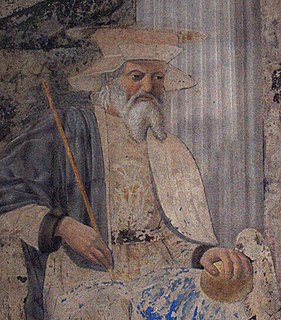 W
WSigismund was King of the Burgundians from 516 to his death. He was the son of king Gundobad and Caretene. He succeeded his father in 516. Sigismund and his brother Godomar were defeated in battle by Clovis' sons and Godomar fled. Sigismund was taken by Chlodomer, King of Orléans, where he was kept as a prisoner. Later he, his wife and children were executed. Godomar then rallied the Burgundian army and won back his kingdom.
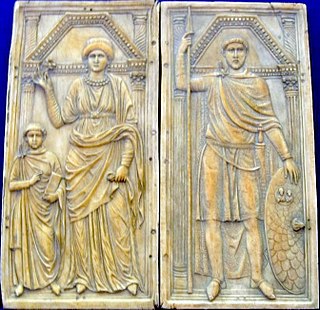 W
WFlavius Stilicho was a high-ranking general in the Roman army who, for a time, became the most powerful man in the Western Roman Empire. He was half Vandal and married to the niece of Emperor Theodosius I; his regency for the underage Honorius marked the high point of Germanic advancement in the service of Rome. After many years of victories against a number of enemies, both barbarian and Roman, a series of political and military disasters finally allowed his enemies in the court of Honorius to remove him from power, culminating in his arrest and subsequent execution in 408. Known for his military successes and sense of duty, Stilicho was, in the words of historian Edward Gibbon, "the last of the Roman generals."
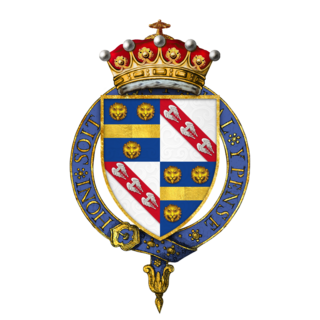 W
WWilliam de la Pole, 1st Duke of Suffolk,, nicknamed Jackanapes, was an English magnate, statesman, and military commander during the Hundred Years' War. He became a favourite of the weak king Henry VI of England, and consequently a leading figure in the English government where he became associated with many of the royal government's failures of the time, particularly on the war in France. Suffolk also appears prominently in Shakespeare's Henry VI, parts 1 and 2.
 W
WThe Three virgins of Tuburga were a group of young women who were executed for being Christians around 257 AD, in what was Roman-era Tunisia.
 W
WTiberius III was Byzantine emperor from 15 February 698 to 10 July or 21 August 705 AD. Little is known about his early life, other than that he was droungarios, a mid-level commander, of the Cibyrrhaeots, and that his birth name was Apsimar. In 696, Tiberius was part of an army led by John the Patrician sent by Byzantine Emperor Leontios to retake the city of Carthage in the Exarchate of Africa, which had been captured by the Arab Umayyads. After seizing the city, this army was pushed back by Umayyad reinforcements and retreated to the island of Crete; some of the officers, fearing the wrath of Leontios, killed John and declared Tiberius emperor. Tiberius swiftly gathered a fleet, sailed for Constantinople, and deposed Leontios. Tiberius did not attempt to retake Byzantine Africa from the Umayyads, but campaigned against them along the eastern border with some success. In 705 former Emperor Justinian II, who had been deposed by Leontios, led an army of Slavs and Bulgars to Constantinople, and after entering the city secretly, deposed Tiberius. Tiberius fled to Bithynia, but was captured several months later and beheaded between August 705 and February 706. His body was initially thrown into the sea, but was later recovered and buried in a church on the island of Prote.
 W
WVenantius of Camerino is the patron saint of Camerino, Italy and Raiano, Italy. Christian tradition holds that he was a 15-year-old who was tortured, and martyred by decapitation at Camerino during the persecutions of Decius. Martyred with him were 10 other Christians, including the priest Porphyrius, Venantius' tutor; and Leontius, bishop of Camerino.
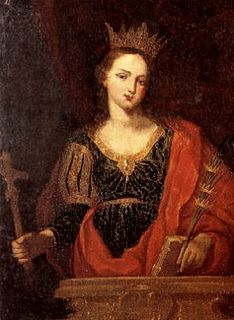 W
WSaint Venera is venerated as a Christian martyr of the 2nd century. Little is known of this saint. The date of her death is traditionally given as July 26, 143 AD.
 W
WWazir Khan was Governor of Sirhind, administering a territory of the Mughal Empire between the Sutlej and Yamuna rivers.